
Creative: Secaicho Union
Secaicho Union:World-class hand-sewn technique Hand Sewn Welted
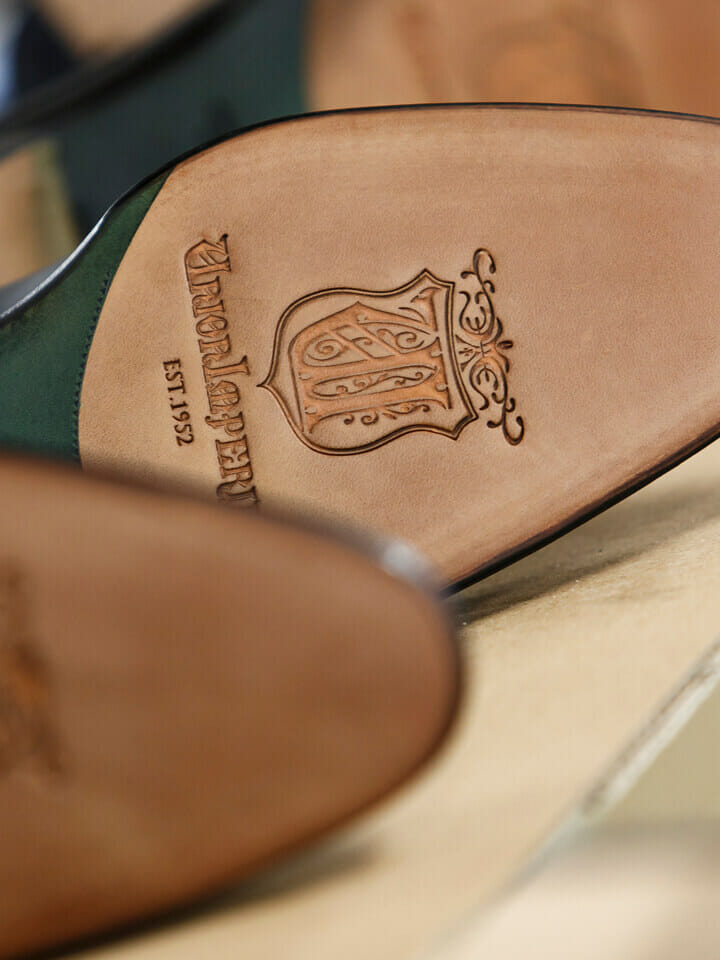
When we talk about high-end leather shoes, the "Goodyear welt manufacturing method" and "McKay manufacturing method" first come to mind. The former is known for its durability, and the latter is known for its comfort, and although both have a long history, there are still many enthusiasts. However, in recent years, a manufacturing method that combines the advantages of both has been attracting attention. It is the Hand Sewn Welted manufacturing method (hereinafter referred to as the Hand Sewn manufacturing method). It's not a new method. Rather, it dates back about 200 years as the prototype of the Goodyear welt method. Since the hand-sewn manufacturing method is based on traditional manual work, it is not suitable for mass production in terms of labor and technical capabilities. Also, it is costly, so it is not meant for everybody.
Secaicho Union has created a mass production process using this hand-sewn method. The brand "Union Imperial" is gaining strong popularity due to its excellent comfort and affordable price allowed by mass production.
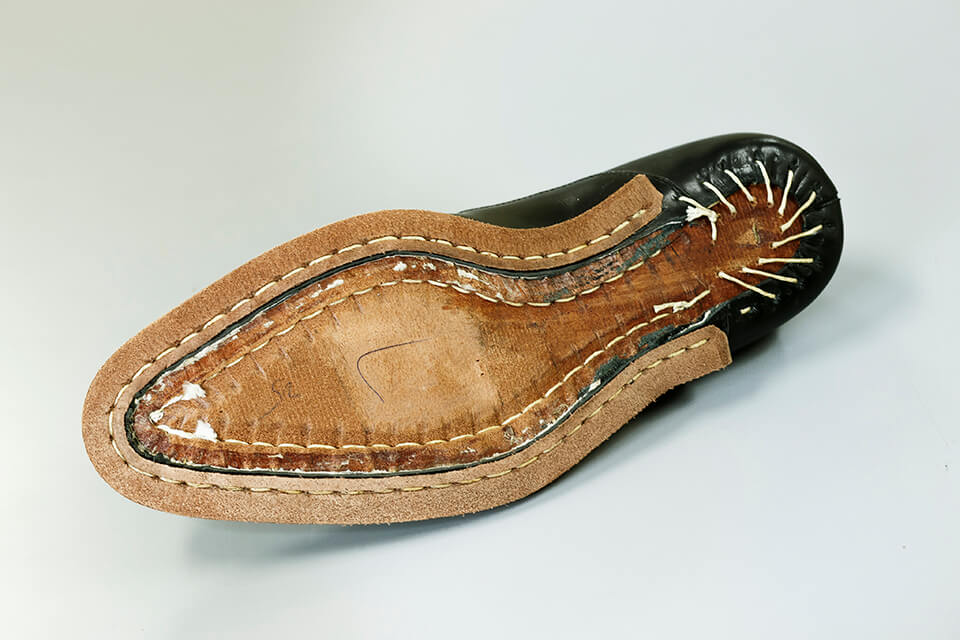
Hand Sewn Welted Manufacturing Method
With the Goodyear welt method, ribs are used when sewing together the insole and welt, but with the hand-sewn method, a groove is made in the insole instead of the rib and sewn directly. Since the groove is not as high as the rib, the cork between the insole and midsole can be made thinner. This is the reason why there is little sinking at the beginning of wearing and a more comfortable fit can be obtained. Since each needle is tightened by hand, there is an appropriate amount of looseness in the place where the force of the foot is applied, which again, makes the shoe fit easily to the foot. In addition, unlike the McKay method, there are no seams that reach the inside of the shoe from the ground, so it has excellent water resistance.
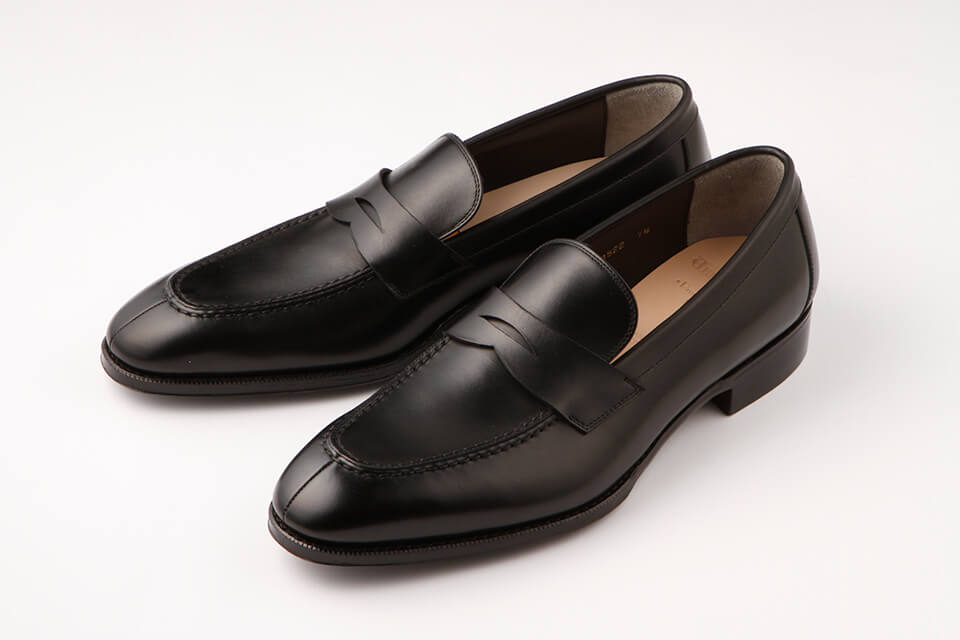
The loafers made by the hand-sewn method have excellent heel contact. The hand-dyed leather with original dyes is also beautiful. 45,150 yen (at the time of publication)
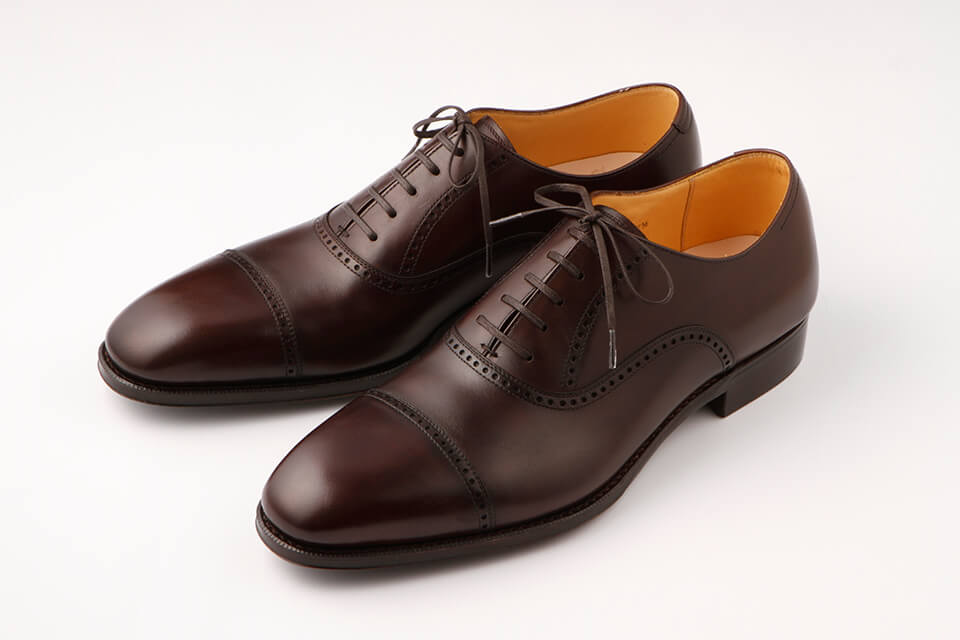
A semi-brogue with a beautiful outside curve, unique to the hand-sewn method that produces a form that is faithful to the wooden last. 45,150 yen (at the time of publication)
"The hand-sewn method does not require the ribs (knobs on the insole) used in the Goodyear method. Therefore, the sole has more support and the foot is more comfortable. The insole and welt are sewn directly by hand, so it is very durable," Mr. Tetsushi Oda of the Planning and Development Department says about the shoe’s high functionality.
In addition, the beautiful silhouette is unique to the hand-sewn manufacturing method. As Mr. Oda said, there are no ribs, so it is easy to express the wooden shape without any slack at the bottom. The company has designed the heel cup to be smaller than that of overseas shoes to match the feet of Japanese people, but such attention to detail is fully utilized because of the hand-sewn method. So how did Secaicho Union make it possible to mass-produce this traditional method?
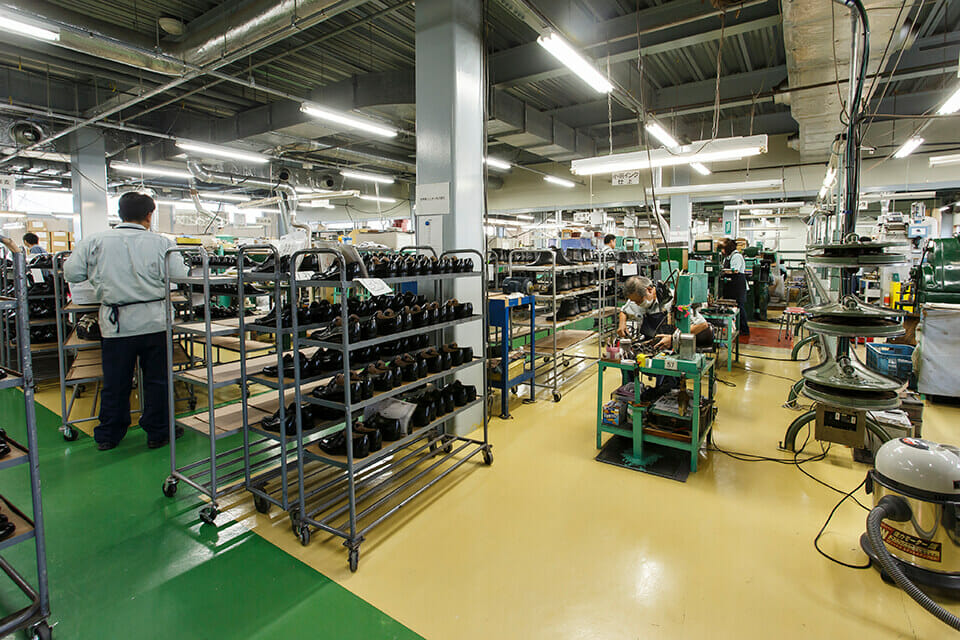
The vast factory is divided into each process. Every time you walk along the line, the product approaches completion. Produces about 100 pairs a day by various manufacturing methods
Secaicho Union (originally Union Royal), which was founded in 1952 with the aim of "making world-class shoes," has a technical partnership with Italy's long-established shoe maker Marelli. At the time when the Goodyear welt was common, they were one of the first to introduce the McKay manufacturing method, which Marelli was known for, and from the 1970s to the 1980s they maintained a unique position in the industry as the "McKay Union". However, in the 90's, the McKay manufacturing method became common among other manufacturers, making it difficult to differentiate. From here, the trial and error process of Secaicho Union began. "We devised a Bolognese-style Goodyear method that improved the Goodyear method. We were desperate to do something unique, such as collaborating with multi brand stores, etc."
This "let's try anything" mentality came to fruition, and in 2007 they arrived at the hand-sewn method. Employees were fascinated by the shoes that were both soft and durable, and found a solution to their survival. Then the production system was established. The domestic factory is in charge of the basic parts such as samples and bottoming, and the instep is done at the overseas factory. They were able to realize mass production of hand-sewn shoes, which is rare in the world.
Some may have one question here. If a similar production system is set up, wouldn’t other companies be able to do the same? However, the hand-sewn manufacturing method cannot be mastered overnight. It takes time. "In the 90's, when we were still searching for our big break, skilled craftsmen went around the production factory and spent a lot of time carefully providing technical guidance. As a result, craftsmen who can handle the hand-sewn manufacturing method have grown. One of our strengths is that each site has the same high level of technical capabilities. "
There is a history of the technique. And they continue to perfect the technique. At the company's factory in Kamagaya City, Chiba Prefecture, skilled craftsmen continue to work diligently. From sewing to edge processing to finishing, each process is handled by a specialist, and each time the shoe moves from one hand to another, the shoe approaches the shape it is meant to be. The baton of skill and soul is passed on and reaches the goal, and the shoes give off a warm light.This is what it means to "making world-class shoes".
By constantly seeking new styles, the future of manufacturing is bright. However, the newness is not always unknown. If you want to create something new, look into the past. If you respect your ancestors, learn traditional techniques, and continue to hone your skills, there must be an "old but new hand-sewn manufacturing method" in every industry.
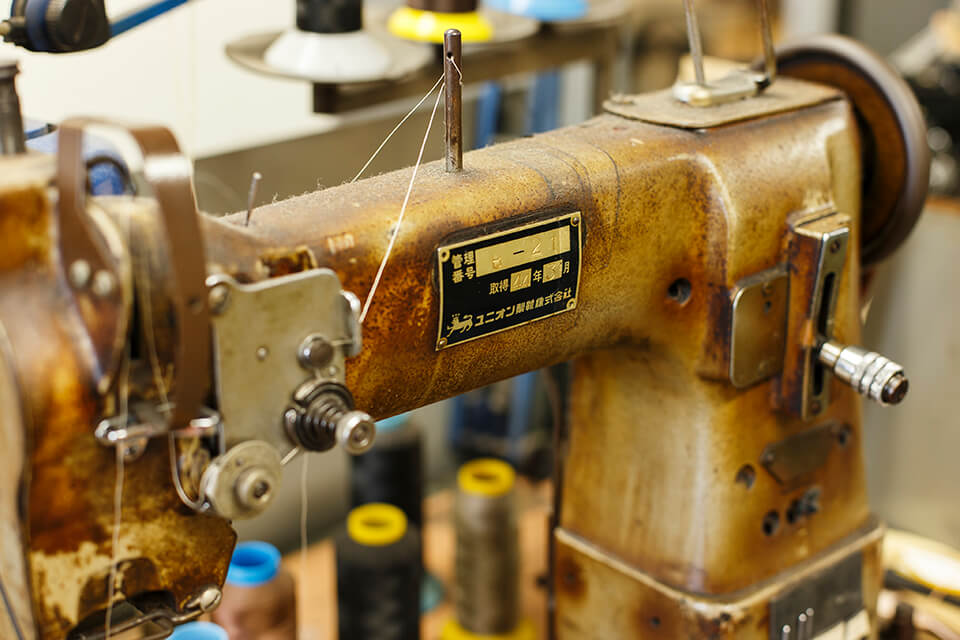
A sewing machine that tells the history of the company. Of course, it is still actively used.